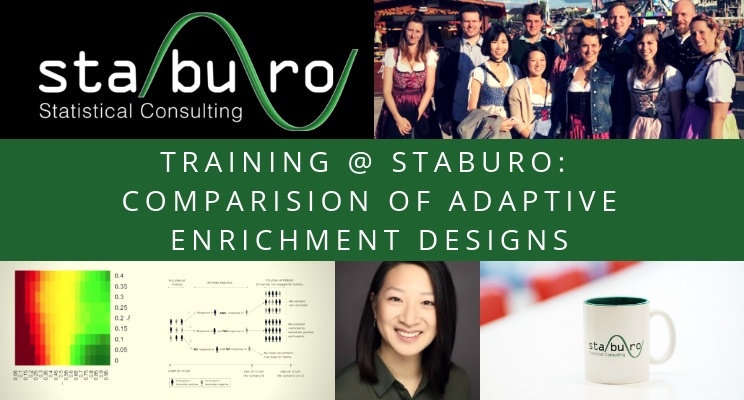
Training @ Staburo: Adaptive Enrichment Design Biostatistics
Due to the growing interest in personalized medicine, where patients receive individually tailored therapies, the application of adaptive enrichment designs becomes increasingly more important.
In standard approaches, the confirmatory clinical trial is run in the full population and patients who are more likely to benefit are identified in post-hoc subgroup analyses. However, disregarding the heterogeneity in the treatment effect, can lead to an erroneous stop of the development, as the effect may be diluted by the low efficacy in the overall population. In situations with a prior confidence about a benefit, only in a subset of patients, a further option is to start the trial with a broad range of patients and to sequentially change inclusion criteria, based on the data of the ongoing trial. After pre-planned interim analyses, these so-called adaptive enrichment designs allow the further recruitment of only the targeted subgroup(s). Depending on the selection rule at the interim analyses, an early stop for futility is also possible. In case the first-stage data indicates a promising benefit only in the subgroup, the trial is enriched by allocating the remaining sample size only to this patient subset. If the interim data fulfills the selection criterion for all subgroups, the original study plan is maintained and the null hypotheses, regarding all subgroups, are tested at the final stage.
In research, it has been shown that adaptive enrichment designs can obtain higher power than fixed parallel group designs or adaptive designs without enrichment, when the same sample size is used. Hence, adaptive enrichment designs are a meaningful contribution in the context of precision medicine.

Recent Comments